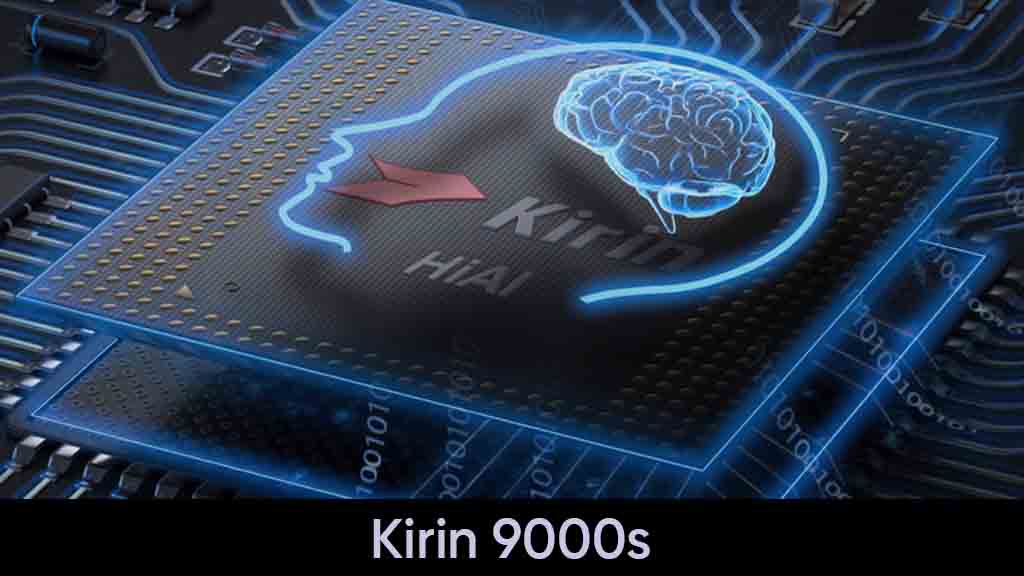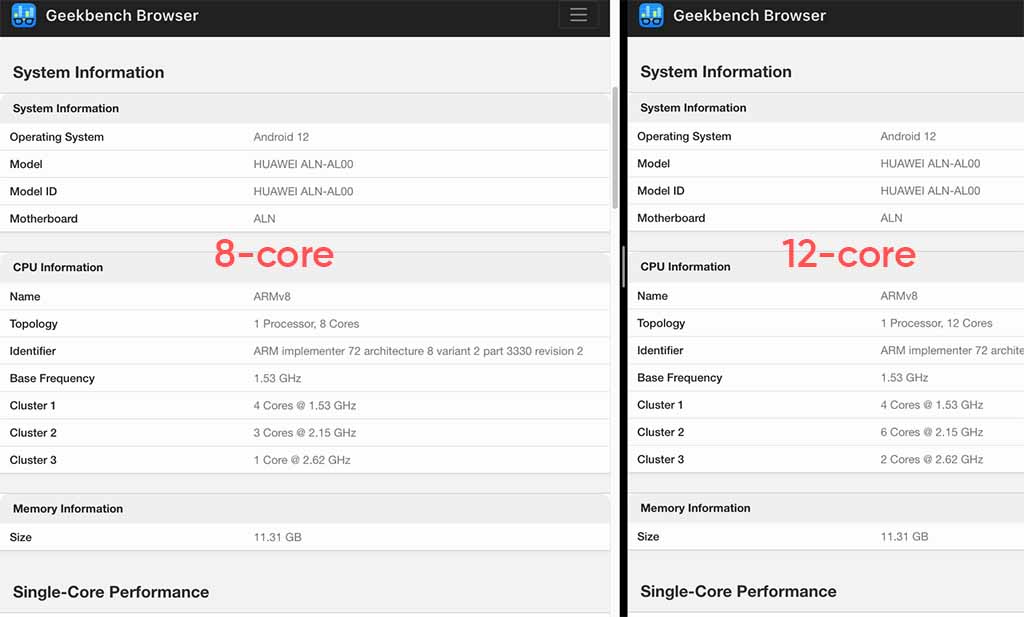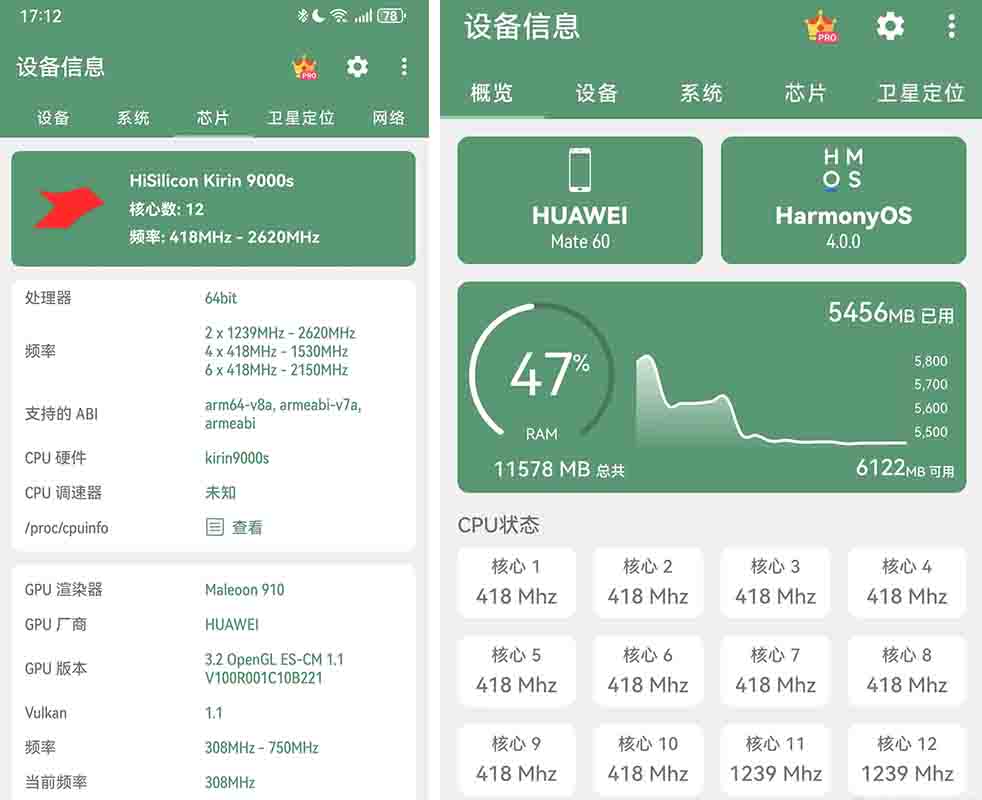Huawei
Huawei Kirin 9000s chip showing 12-core after recent software update

After a recent software update, Huawei has revealed another hidden secret about the Kirin 9000s, which now has 12-core architecture. This is quite surprising as the phone was previously benchmarked with only 8-core but the latest revelation is something that you need to look at with interest.
HarmonyOS 4.0.0.116 was recently released for Huawei Mate 60 series and Mate X5 smartphones. Both of these are equipped with Kirin 9000s chipset, a new processor from Huawei.
However, phone information apps and Geekench marked that the Mate 60 is now running a 12-core chip. Initially, the same apps and platform showed the chip with an 8-core architecture.
So, what’s new?
For that, we need to first explore the architectural details and differences.
The octa-core chip specifications include the following core and respective frequencies:
- 4 x Cores at 1.53 GHz
- 3 x Cores at 2.15 GHz
- 1 x Cores at 2.62 GHz
Below is the new 12-core setup.
- 4 x Cores at 1.53 GHz
- 6 x Cores at 2.15 GHz
- 2 x Cores at 2.62 GHz

The 12-core chip equips 3 additional 2.15GHz cores and 1 additional 2.62 GHz core. While the base frequency remains locked at 1.53 GHz in both new and old variants.
This information is confirmed by screenshots from a Chinese phone specifications mobile app. Meanwhile, the GPU, which is Maleoon 910, remains unknown for the Geekbench.

12-core:
We’ve already seen 12-core Huawei Kirin 9000s on the Antutu benchmark. But It’s possible that the company has not activated these specs on the ground with the initial announcement.
Now the real question is, can a software update increase the chipset core?
Absolutely Not! A core is a part of the chip hardware and cannot be added or removed virtually. However, the software could optimize the system performance and enhance cooperation with the core. This will outcome in a better or faster performance.
We’ve no confirmation but it’s certain that those 4 additional cores weren’t there in the first performance test. However, these appeared right after software installation, which suggests that they were not utilized.
We are waiting for more information on this matter and we’ll keep you posted with all of the latest developments.
(Source – Geekbench)






